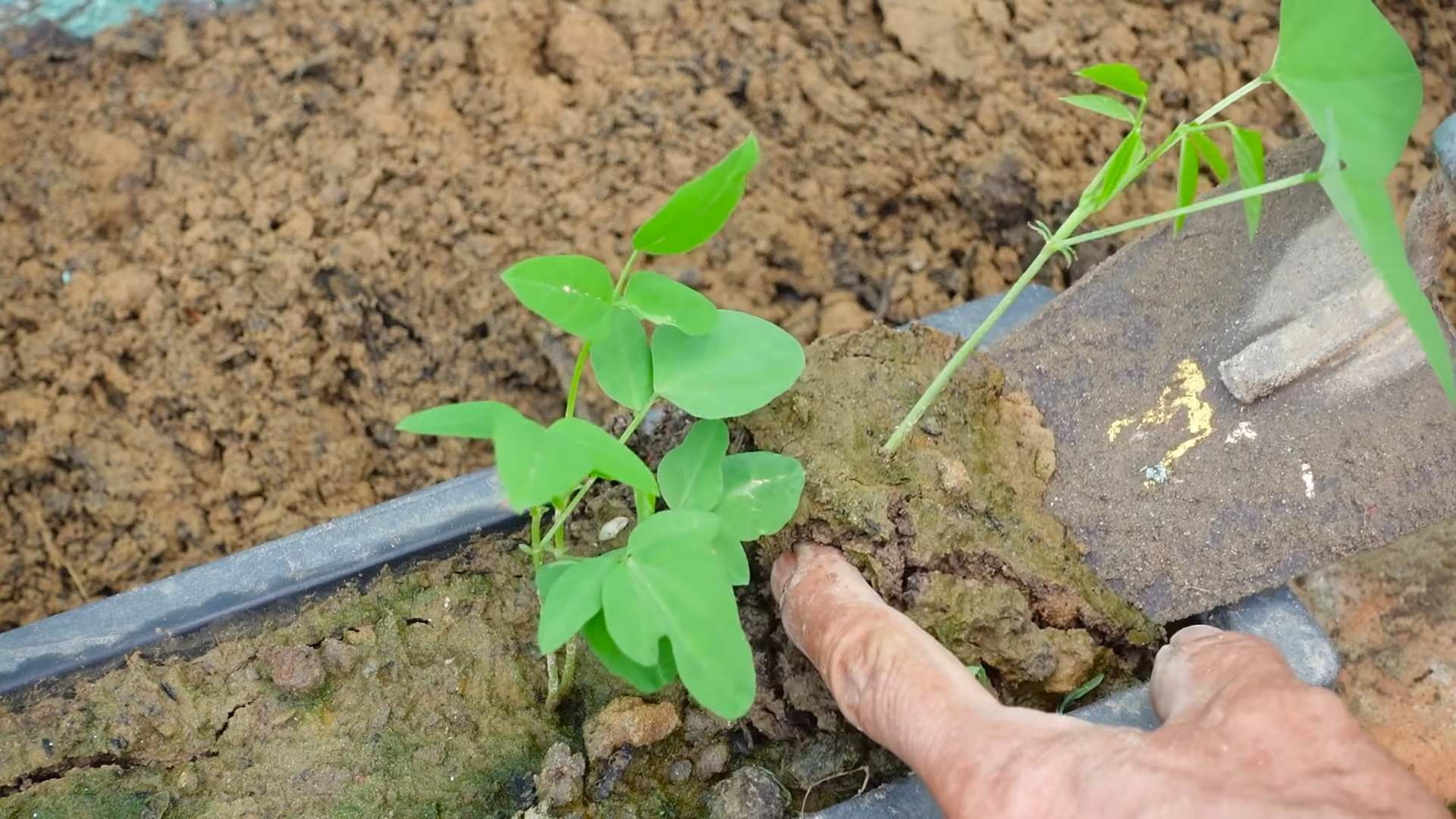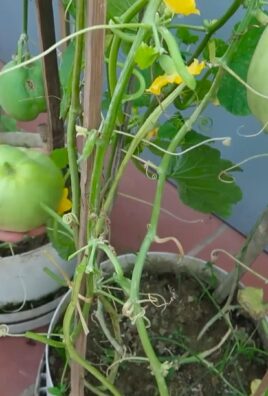Grow Dragon Beans, and unlock a world of vibrant color and delicious flavor right in your own backyard! Have you ever dreamed of cultivating something truly unique, something that would be a conversation starter and a culinary delight? Well, look no further! This DIY guide is your passport to growing these extraordinary beans, transforming your garden into a spectacle of nature’s artistry.
Dragon beans, also known as ‘borlotti beans’ in some regions, have a rich history, particularly in Italian cuisine. For generations, they’ve been a staple, adding a creamy texture and nutty flavor to soups, stews, and salads. But beyond their culinary appeal, growing your own dragon beans connects you to a tradition of self-sufficiency and a deeper appreciation for the food we eat. I think that’s pretty cool!
In today’s fast-paced world, many of us are disconnected from the origins of our food. We rely on supermarkets, often unaware of the journey our produce takes before it reaches our plates. That’s why learning to grow dragon beans, or any food for that matter, is so important. It empowers you to take control of your food source, ensuring freshness, quality, and a connection to the earth. Plus, who wouldn’t want to impress their friends and family with a homegrown harvest of these beautiful, speckled beans? Let’s get started and I’ll show you how!

Growing Dragon Beans: A DIY Guide to a Bountiful Harvest
Okay, so you want to grow dragon beans? Awesome! These vibrant, long beans are not only delicious but also a real showstopper in the garden. I’ve grown them for years, and I’m excited to share my secrets to a successful harvest. Get ready to impress your friends and family with these beauties!
Choosing Your Dragon Bean Variety
First things first, let’s talk varieties. Dragon beans come in a few different colors, from the classic purple-streaked green to solid purple. My personal favorite is the ‘Yard Long’ bean, which, as the name suggests, can grow up to a yard long! Here’s a quick rundown:
* **Yard Long Beans:** These are the most common and widely available. They’re known for their impressive length and slightly nutty flavor.
* **Chinese Red Noodle Beans:** These are a vibrant red color and have a slightly sweeter taste. They can be a bit harder to find, but they’re worth the effort!
* **Purple Dragon Beans:** These are a beautiful deep purple color and offer a similar flavor profile to the Yard Long variety.
No matter which variety you choose, make sure you’re getting your seeds from a reputable source. This will ensure you’re getting healthy, viable seeds that will give you the best chance of success.
Preparing for Planting: Location, Location, Location!
Dragon beans are sun-loving plants, so you’ll need to choose a location that gets at least 6-8 hours of direct sunlight per day. They also need well-draining soil. If your soil is heavy clay, you’ll want to amend it with compost or other organic matter to improve drainage.
Here’s what to consider when choosing your spot:
* **Sunlight:** Full sun is a must!
* **Soil:** Well-draining and fertile. Amend with compost if needed.
* **Support:** Dragon beans are climbing plants, so you’ll need to provide them with a trellis, fence, or other support structure.
* **Space:** Give them plenty of room to grow. They can get quite large!
Step-by-Step Planting Guide
Now for the fun part – planting! I usually start my dragon beans directly in the ground after the last frost, but you can also start them indoors a few weeks earlier if you want a head start.
Direct Sowing (My Preferred Method)
1. **Prepare the Soil:** Loosen the soil and amend with compost or other organic matter. Rake the area smooth.
2. **Sow the Seeds:** Plant the seeds about 1 inch deep and 2-3 inches apart.
3. **Water Thoroughly:** Water the area gently but thoroughly after planting.
4. **Provide Support:** Install your trellis or other support structure near the seedlings as soon as they emerge.
5. **Thin Seedlings (If Necessary):** Once the seedlings are a few inches tall, thin them to about 6-8 inches apart.
Starting Indoors (For a Head Start)
1. **Choose Your Containers:** Use small pots or seed trays filled with seed-starting mix.
2. **Sow the Seeds:** Plant the seeds about 1 inch deep in the seed-starting mix.
3. **Water Gently:** Water the seed-starting mix gently to moisten it.
4. **Provide Light:** Place the containers under grow lights or in a sunny window.
5. **Harden Off Seedlings:** Before transplanting the seedlings outdoors, gradually acclimate them to outdoor conditions by exposing them to increasing amounts of sunlight and fresh air over a period of a week or two.
6. **Transplant Seedlings:** Once the danger of frost has passed, transplant the seedlings into the garden, spacing them about 6-8 inches apart.
Caring for Your Dragon Bean Plants
Once your dragon bean plants are established, they’re relatively easy to care for. Here’s what you need to do:
* **Watering:** Water regularly, especially during dry spells. Dragon beans need consistent moisture to thrive. Aim for about an inch of water per week.
* **Fertilizing:** Fertilize every few weeks with a balanced fertilizer. I like to use a liquid fertilizer diluted to half strength.
* **Weeding:** Keep the area around your dragon bean plants free of weeds. Weeds can compete with the plants for nutrients and water.
* **Pest Control:** Keep an eye out for pests like aphids and bean beetles. If you see any pests, treat them with an appropriate insecticide or organic pest control method. I prefer using insecticidal soap for aphids.
* **Training:** As the plants grow, train them to climb the trellis or other support structure. This will help them stay healthy and productive.
Harvesting Your Dragon Beans
This is the moment you’ve been waiting for! Dragon beans are typically ready to harvest about 60-70 days after planting.
Here’s how to tell when they’re ready:
* **Size:** The beans should be long and slender, but not too thick.
* **Tenderness:** The beans should be tender and easy to snap.
* **Color:** The color should be vibrant and consistent.
To harvest, simply snap the beans off the vine. Be careful not to damage the plant. Harvest regularly to encourage continued production. The more you pick, the more they produce!
Troubleshooting Common Problems
Even with the best care, you might encounter a few problems along the way. Here are some common issues and how to deal with them:
* **Yellowing Leaves:** This could be a sign of overwatering, underwatering, or nutrient deficiency. Check the soil moisture and adjust your watering schedule accordingly. Fertilize with a balanced fertilizer.
* **Lack of Flowers:** This could be due to insufficient sunlight, poor soil, or excessive nitrogen fertilizer. Make sure your plants are getting enough sunlight and that the soil is well-draining. Avoid using fertilizers that are high in nitrogen.
* **Pest Infestations:** As mentioned earlier, aphids and bean beetles are common pests. Treat them with an appropriate insecticide or organic pest control method.
* **Disease:** Dragon beans can be susceptible to fungal diseases like powdery mildew. To prevent disease, make sure your plants have good air circulation and avoid overhead watering. If you see signs of disease, treat with a fungicide.
Creative Ways to Use Your Dragon Beans
Okay, so you’ve got a mountain of dragon beans. Now what? Here are some of my favorite ways to use them:
* **Stir-fries:** Dragon beans are a delicious addition to stir-fries. They add a nice crunch and a slightly nutty flavor.
* **Salads:** Add raw or blanched dragon beans to salads for a pop of color and flavor.
* **Steaming:** Steam dragon beans and serve them as a side dish.
* **Pickling:** Pickle dragon beans for a tangy and flavorful treat.
* **Soups and Stews:** Add chopped dragon beans to soups and stews for added texture and nutrients.
* **Grilled:** Lightly grill dragon beans for a smoky and delicious side dish.
Saving Seeds for Next Year
If you want to save seeds from your dragon beans for next year, here’s how:
1. **Allow the Beans to Mature:** Let a few of the beans on the plant mature completely. They will become dry and brown.
2. **Harvest the Dry Beans:** Once the beans are completely dry, harvest them from the plant.
3. **Shell the Beans:** Shell the beans and remove the seeds.
4. **Dry the Seeds:** Spread the seeds out on a tray and let them dry completely.
5. **Store the Seeds:** Store the seeds in an airtight container in a cool, dry place.
Final Thoughts
Growing dragon beans is a rewarding experience. With a little bit of care and attention, you can enjoy a bountiful harvest of these delicious and beautiful beans. So get out there and start planting! You won’t regret it. Happy gardening!

Conclusion
So, there you have it! Growing your own dragon beans isn’t just a gardening project; it’s an adventure that brings a touch of magic to your backyard and a burst of flavor to your table. We’ve walked you through the process, from selecting the right seeds to nurturing your plants and harvesting those impressive, vibrant pods.
Why is this DIY trick a must-try? Because it offers a unique and rewarding experience that store-bought beans simply can’t match. Imagine the satisfaction of serving a meal featuring dragon beans you cultivated yourself, knowing exactly where they came from and how they were grown. The striking visual appeal of these beans, with their purple streaks and impressive size, makes them a conversation starter and a culinary delight. Plus, growing your own food connects you to the natural world in a tangible way, fostering a deeper appreciation for the food we eat.
But the benefits don’t stop there. Growing dragon beans is also a fantastic way to introduce children to gardening, teaching them about plant life cycles, responsibility, and the joy of harvesting their own food. It’s an educational and engaging activity that the whole family can enjoy.
Looking for variations? Consider these ideas to personalize your dragon bean growing experience:
* Vertical Gardening: Dragon beans are climbers, so utilize trellises, fences, or even repurposed ladders to create a stunning vertical garden. This not only saves space but also adds visual interest to your garden.
* Companion Planting: Plant your dragon beans alongside beneficial companion plants like marigolds (to deter pests) or nasturtiums (to attract pollinators).
* Seed Saving: Once your dragon beans have matured, save some of the seeds for next year’s planting. This is a great way to ensure a continuous supply of your favorite beans and to adapt them to your local climate over time.
* Culinary Creativity: Experiment with different ways to prepare your dragon beans. Try them steamed, sautéed, grilled, or added to soups and stews. Their unique flavor and texture make them a versatile ingredient in a variety of dishes.
We’re confident that you’ll find growing dragon beans to be a fulfilling and enjoyable experience. The vibrant colors, the impressive size, and the delicious flavor of these beans make them a true standout in any garden.
Now, it’s your turn! We encourage you to give this DIY trick a try. Start small, be patient, and don’t be afraid to experiment. And most importantly, share your experience with us! We’d love to hear about your successes, your challenges, and any tips or tricks you discover along the way. Share your photos and stories on social media using #DragonBeanAdventures. Let’s create a community of dragon bean enthusiasts and inspire others to discover the joy of growing their own food. Happy gardening!
Frequently Asked Questions (FAQ)
What exactly are dragon beans, and why should I grow them?
Dragon beans, also known as Borlotti beans, are a type of shelling bean prized for their striking appearance and delicious flavor. They feature beautiful purple streaks on their pods and creamy, nutty-tasting beans inside. Growing them yourself offers several advantages: you get fresher, more flavorful beans than you can typically find in stores; you control the growing conditions, ensuring they’re free from harmful pesticides; and you experience the satisfaction of harvesting your own food. Plus, their unique appearance makes them a conversation starter and a beautiful addition to any garden.
When is the best time to plant dragon beans?
The ideal time to plant dragon beans is after the last frost in your area, when the soil has warmed up to at least 60°F (15°C). Dragon beans are sensitive to cold temperatures, so planting too early can stunt their growth or even kill them. Check your local weather forecast and planting guides to determine the best planting date for your region. Generally, late spring to early summer is the optimal time.
How much sunlight do dragon beans need?
Dragon beans require at least 6-8 hours of direct sunlight per day to thrive. Choose a planting location that receives plenty of sunlight throughout the day. If you live in a particularly hot climate, some afternoon shade may be beneficial to prevent the plants from overheating.
What kind of soil is best for growing dragon beans?
Dragon beans prefer well-drained soil that is rich in organic matter. Amend your soil with compost or well-rotted manure before planting to improve its fertility and drainage. A slightly acidic to neutral soil pH (around 6.0 to 7.0) is ideal. Avoid planting in heavy clay soil, as this can lead to root rot.
Do dragon beans need a trellis or other support?
Yes, dragon beans are climbing plants and require a trellis, fence, or other support structure to grow properly. Without support, the vines will sprawl along the ground, making them more susceptible to pests and diseases. A trellis also allows for better air circulation, which helps to prevent fungal problems.
How often should I water my dragon bean plants?
Water your dragon bean plants regularly, especially during dry periods. Aim to keep the soil consistently moist but not waterlogged. Water deeply at the base of the plants, avoiding wetting the foliage, which can encourage fungal diseases. Mulching around the plants can help to retain moisture in the soil.
What are some common pests and diseases that affect dragon beans?
Common pests that can affect dragon beans include aphids, bean beetles, and spider mites. Regularly inspect your plants for signs of infestation and take appropriate action, such as spraying with insecticidal soap or neem oil. Diseases that can affect dragon beans include powdery mildew, bean rust, and anthracnose. Ensure good air circulation around the plants and avoid overhead watering to help prevent these diseases.
How long does it take for dragon beans to mature?
Dragon beans typically take 60-80 days to mature, depending on the variety and growing conditions. You’ll know they’re ready to harvest when the pods are plump and the beans inside are fully formed. The pods will also start to dry out and change color.
How do I harvest dragon beans?
To harvest dragon beans, simply snap the pods off the vine when they are mature. You can either shell the beans immediately or allow the pods to dry completely before shelling. To shell the beans, simply break open the pods and remove the beans inside.
Can I save seeds from my dragon bean plants?
Yes, you can save seeds from your dragon bean plants to grow next year. Allow some of the pods to dry completely on the vine. Once they are dry, shell the beans and store them in an airtight container in a cool, dry place. Be sure to label the container with the variety and date.
Are dragon beans safe to eat raw?
No, dragon beans should not be eaten raw. They contain compounds that can be toxic when raw. Always cook dragon beans thoroughly before eating. Cooking breaks down these compounds and makes the beans safe and digestible.
What are some ways to cook dragon beans?
Dragon beans can be cooked in a variety of ways. They can be steamed, boiled, sautéed, grilled, or added to soups and stews. They have a creamy, nutty flavor that pairs well with a variety of herbs and spices. Try them in Italian dishes, soups, or as a side dish.
Can I freeze dragon beans for later use?
Yes, you can freeze dragon beans for later use. Blanch the beans in boiling water for 2-3 minutes, then transfer them to an ice bath to stop the cooking process. Drain the beans and pat them dry before freezing them in a single layer on a baking sheet. Once frozen, transfer the beans to a freezer bag or container. They can be stored in the freezer for up to 6 months.
What are some companion plants for dragon beans?
Good companion plants for dragon beans include marigolds, nasturtiums, rosemary, and thyme. Marigolds help to deter pests, while nasturtiums attract pollinators. Rosemary and thyme are said to improve the flavor of the beans. Avoid planting dragon beans near onions or garlic, as these can inhibit their growth.




Leave a Comment